
 English
English
 French
French
Study the effect of Plectranthii amboinicii’s tea in treatment of acute bronchitis
Etudier l’effet du thé de Plectranthii amboinicii dans le traitement de la bronchite aiguë
T. Truong-Thanh1, T. Tran Thi Minh2, T. Tang Thi Thao1, T. Tang Le Quynh1
1 : Bio-Medical Research Center. Lam Dong Medical College. Vietnam
2: Institute of Traditional Medicine. Hanoi. Vietnam
Corresponding author
MSc TANG THI THAO Tram
Bio-Medical Research Center. Lam Dong Medical College. Vietnam
E-mail: thaotram1989@gmail.com
ABSTRACT
Plectranthii amboinicii (Lour.) Speng - Lamiaceae (Mexican mint) is a plant used by Vietnamese people for eating and treating some illnesses. This study is designed to quantify the oil content extraction of Folium Plectranthii amboinicii in different regions and seasons in Southern Viet Nam and its antimicrobial and antioxidant properties. The extract of Plectranthii amboinicii leaves were quantified for the active compounds and analyzed for antibacterial, antifungal and antioxidant effects. Results showed that the use of Plectranthii amboinicii’s tea has a positive effect in the treatment of acute respiratory infections. Besides, Plectranthii amboinicii’s tea is also considered easy to use even with children and safe for everyone to use it.
KEYWORDS: Plectranthii amboinicii; Mexican mint; Tea; Acute bronchitis.
RÉSUMÉ
Plectranthii amboinicii (Lour.) Speng - Lamiaceae (Menthe mexicaine) est une plante utilisée par les Vietnamiens pour manger et traiter certaines maladies. Cette étude vise à quantifier l'extraction de la teneur en huile de Folium Plectranthii amboinicii dans différentes régions et saisons dans le sud du Viet Nam, ainsi que ses propriétés antimicrobiennes et antioxydantes. Les extraits de feuilles de Plectranthii amboinicii ont été quantifiés pour les composés actifs et analysés pour déterminer leurs effets antibactériens, antifongiques et antioxydants. Les résultats de cette étude montrent que l’utilisation du thé de Plectranthii amboinicii a un effet positif dans le traitement de bronchite non infectieuse aiguë. Par ailleurs, le thé de Plectranthii amboinicii est également considéré comme facile à utiliser même chez les enfants et sûr pour tout le monde.
MOTS CLÉS: Plectranthii amboinicii; Menthe mexicain; Thé; Bronchite aigue.
INTRODUCTION
Plectranthii amboinicii (Lour.) Speng - Lamiaceae (Mexican mint) is another name Coleus amboinicus. it is a grass, tall about 30-50cm. The body of the tree grows close to the soil and is differentiated into wood. The leaves are opposite and succulent; leaf edges have teeth; the upper surface of the leaves has a single feather; the underside of leaves has more exudative hairs. It is a popular spice vegetable used by people. Plectranthii amboinicii leaf have essential oils, it has very pleasant fragrance [1]. According to traditional medicine, Plectranthii amboinicii have spicy, warm and fragrant having the effect in prevention of cold, reduce of sputum, and bacticide. It is usualy used to cure sore throats or treatment of flu [2-6]. The purpose of this work is to study the effect of Plectranthii amboinicii tea collected in Lam Dong in treating acute bronchitis.
METHODS
Materials
Plectranthii amboinicii leaves were collected in Da Lat to investigate the oil content to make tea filter bags. Sample preparation: Samples of Plectranthii amboinicii are collected in Lam Dong
Methods
Study of biological activity
The extracts of CPlectranthii amboinicii’s leaves were tested for antibacterial and fungal resistance with Baccillus subtilis ATCC 6633, Staphyllococcus aereus ATCC 25923, Escherichia coli ATCC 6633, Candida abicans 25922 according to the method of Negi and colleagues [8].
Qualitative composition of compounds in Plectranthii amboinicii leaves
Qualitative of organic compounds in Lemon leaves with 2 methods:
• Chemical method with general reagents and thin layer chromatography. Process of analyzing plant chemical composition based on Ciuley process [6].
• Thin layer chromatography is carried out for the purpose of survey of solvent selection and ratio of solvent soluble essential oils.
Statistical analysis
Using statistical methods of ANOVA variance analysis, Statistical results are considered significant when p≤ 0,05 with confidence intervals ≥ 95%, The line is drawn by the regression equation with a value of ± SD, which is statistically significant.
RESULTS
Compare the amount of dry medicinal herbs obtained by natural and artificial drying methods with varying heat levels
A hypothesis set out when doing this research is based on supposing two drying methods: natural and artificial and used four levels of artificial drying. The volume of dried medicinal herbs is not much different; it means that the drying method does not affect the loss; the amount of dry medicinal materials obtained is not statistically significant. With the volume of fresh medicinal materials, it is dried in two natural and man-made methods, and with different heat levels of artificial methods from 300C- 500C. The data of the experiment are shown in Table 1.
Concentration of essential oils
From the results in Table 1, we can see corresponding to 1 kg of fresh medicinal herbs we obtain 4.68±0.15 grams of dried medicinal herbs. Assuming that this study is done, the volatile content of volatile substances in pharmaceutical leaves is not significantly changed by two drying methods: natural and artificial with four levels of artificial drying; it does not affect the concentration of volatile substances in leaves after drying to stable hydrolysis. The results obtained are not significantly different.
With the volume of essential oil obtained by quantitative method according to the regulation of Pharmacopoeia' Vietnam in appendix number 274. Through the data collected and after processing showed: There is a difference in oil content obtained by methods and temperature of drying medicinal herbs. The concentration of essential oils lost significantly. In other words, drying conditions greatly affect the content of essential oils in medicinal materials through the drying process.
Through the results shown in Tables 1—3 and Figure 1, it is easy to see that when drying with thermal program 45 oC, medicinal materials are quickly dried and the amount of essential oil lost with the evaporation of water in medicinal herbs is the least.
As we know in previous research results, essential oils in Plectranthii amboinicii’s leaves are the most notable pharmacological ingredient. In other words, when drying Plectranthii amboinicii leaves at a temperature of 45 oC, the maximum amount of essential oil in medicinal herbs can be preserved, which means ensuring the ingredients with the necessary pharmacological effects of medicinal materials, including volatile compounds and watersoluble compounds. Therefore, the next step of the study must qualitatively identify compounds with pharmacological effects in Plectranthii amboinicii according to Vietnam Pharmacological Standards.
Qualification of Plectranthii amboinicii’s oil obtained from medicinal herbs after drying according to the regulation of Vietnam Pharmacological Standards. Detecting the basic ingredients in essential oils of Plectranthii amboinicii by thin layer chromatography method; the results show that essential oils obtained from cold drying (II) has a dark color, many clearly separated and this shows that the drying process has many new substances being produced. Based on the properties of the essential oils, these new substances are probably made up of oxidation. Other, it is also possible that the slow drying process is a condition for active enzymes to change the active ingredient in essential oils. The marker VII showed the essential oil of medicinal herbs dried at 50 oC is lighter in color and smaller than the other spots. According to previous research and the properties of essential oils, when drying at high temperature in addition to reduced oil content, the main ingredient in essential oil also has a big change in the downward trend (Figure 2).
Study results on acute bronchitis patients Symptoms There were 100 patients with acute bronchitis, of which 52% had symptoms of dry cough; 48% of patients have cough symptoms with mucus. About the sound of coughing; 17% of patients have a light cough sound; 61% of patients have an medium cough sound and 22% of patients have a loud cough sound (Table 4).
Dosage and timing of tea use In terms of dosage, the total number of tea days is 4.66 days; the average number of tea bags used is 2.79 packs per day; 1.16 bags of tea per use. There were 32 people taking tea before meals, 6 using tea with meals, 42 using after meals and 20 using them away from meals (Tables 4-5).
After using tea, the survey results showed that 33% of patients completely cured, 34% reduced cough sounds, 39% reduced the number of coughs, 39% reduced burning, 24% reduced the consistency of sputum and 0% not effective.
Side effects when using tea
Results showed that up to 84% had absolutely no side effects after using tea, 15% had mild, 1% average, no serious side effects.
DISCUSSION
From the above study results showed that Plectranthii amboinicii’s leaves are dried at a temperature of 450C, the oil content obtained is the highest (Table 1), which means ensuring the ingredients with the necessary pharmacological effects of medicinal herbs, including both volatile compounds and watersoluble compounds. After being dried at 45oC, Plectranthii amboinicii are tested for safety and packed into tea bags. For tea bag testing of 100 patients with acute bronchitis, up to 33% completely eliminated the initial symptoms, 39% reduced the number of coughs during the day, 36% recover with no disease. The results showed that only 2.79 tea packages used in a day and within 4.66 days, the symptoms of acute bronchitis decreased markedly. Besides, Plectranthii amboinicii’s tea bag also shows that is safe for the users because the results also showed that up to 84% had no side effects when using tea, 15% had mild side effects and any subject with severe side effects of tea. This result supports the treatment effect of acute bronchitis of Plectranthii amboinicii’s tea and suggesting its effect in reducing the initial symptoms of non infected cold flu with acute bronchitis.
CONCLUSION
The use of lemon basil tea to support the treatment of acute bronchitis despite the positive effect, however, to be widely applied, requires more research and more groups, to be able to once again confirming the effect that lemon basil tea provides support for treatment not only for acute bronchitis in particular and for respiratory diseases in general.
CONFLIT OF INTEREST
No potential conflicts of interest to disclose.
REFERENCES
1. Ahmad A, Khan A, Yousuf S, Khan LA, Manzoor N. Proton translocating ATPase mediated fungicidal activity of eugenol and thymol. Fitoterapia 2010; 81(8): 1157-62.
2. Andersen A. Final report on the safety assessment of sodium p-chloro-m-cresol, p-chloro-m-cresol, chlorothymol, mixed cresols, m-cresol, o-cresol, p-cresol, isopropyl cresols, thymol, o-cymen-5-ol, and carvacrol. International journal of toxicology. 2006;25 Suppl 1: 29–127.
3. Cox SD, Markham JL.. Susceptibility and intrinsic tolerance of Pseudomonas aeruginosa to selected plant volatile compounds. J Appl Microbiol2007;103:930–6.
4. Cristani M, D'Arrigo M, Mandalari G et al. Interaction of four monoterpenes contained in essential oils with model membranes: implications for their antibacterial activity. J Agric Food Chem 2007; 55(15): 6300–8.
5. Di Pasqua R, Betts G, Hoskins N, Edwards M, Ercolini D, Mauriello G. Membrane toxicity of antimicrobial compounds from essential oils. J Agric Food Chem 2007; 55(12): 4863–70.
6. Du WX, Olsen C.E., Avena-Bustillos R.J., McHugh T.H., Levin C.E., Friedman M. Storage Stability and Antibacterial Activity against Escherichia coliO157:H7 of Carvacrol in Edible Apple Films Made by Two Different Casting Methods. J Agric Food Chem. 2008;56(9): 3082–8.
7. El-Hawary SS, El-Sofany RH, Abdel-Monem AR, Ashour RS, Sleem AA. Seasonal variation in the composition of Folium Plectranthii amboinicii (Lour.) Spreng essential oil and its biological activities. American Journal of Essential Oils and Natural Products 2013;1:11-18.
8. Negi PS., Jayaprakasha G.K., Jagan Mohan Rao L, Sakariah KK. Antibacterial Activity of Turmeric Oil- A By - Product from Curcumin Manufacture. Journal of Agricultural Food Chemistry 1999;2397- 2400.
FIGURES - TABLES
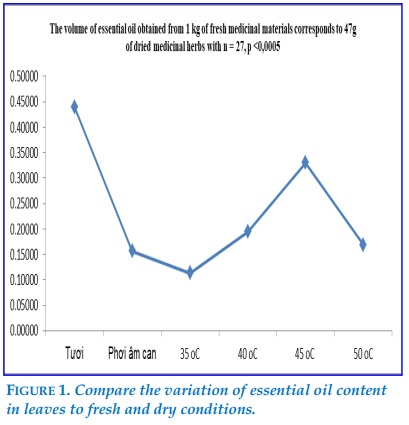
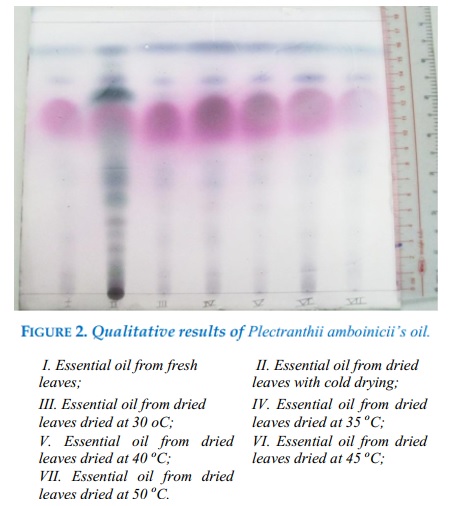
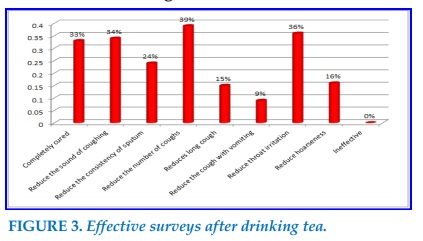
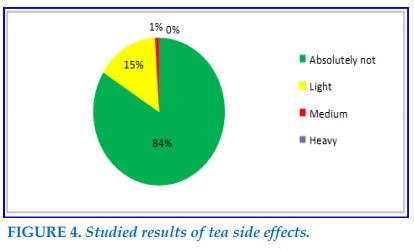
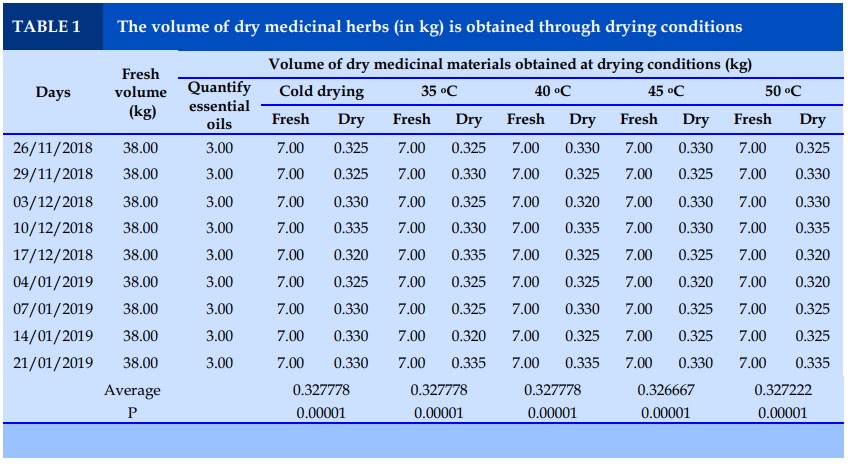
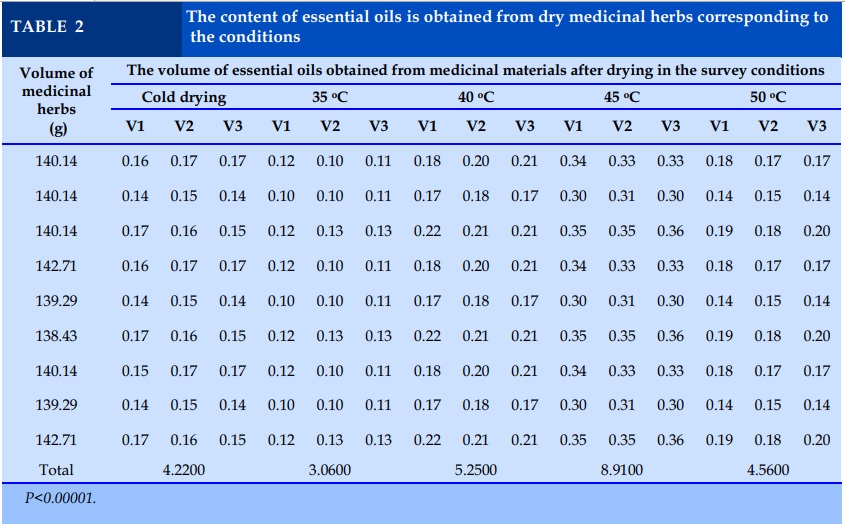
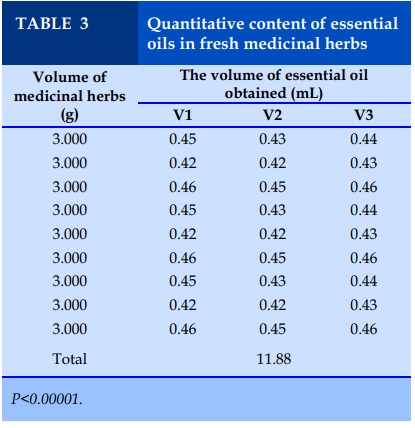
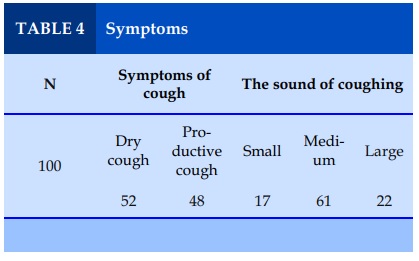
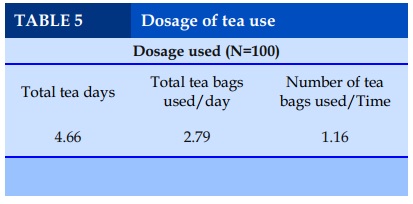
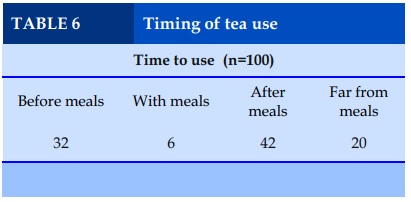
REFERENCES
1. Ahmad A, Khan A, Yousuf S, Khan LA, Manzoor N. Proton translocating ATPase mediated fungicidal activity of eugenol and thymol. Fitoterapia 2010; 81(8): 1157-62.
2. Andersen A. Final report on the safety assessment of sodium p-chloro-m-cresol, p-chloro-m-cresol, chlorothymol, mixed cresols, m-cresol, o-cresol, p-cresol, isopropyl cresols, thymol, o-cymen-5-ol, and carvacrol. International journal of toxicology. 2006;25 Suppl 1: 29–127.
3. Cox SD, Markham JL.. Susceptibility and intrinsic tolerance of Pseudomonas aeruginosa to selected plant volatile compounds. J Appl Microbiol2007;103:930–6.
4. Cristani M, D'Arrigo M, Mandalari G et al. Interaction of four monoterpenes contained in essential oils with model membranes: implications for their antibacterial activity. J Agric Food Chem 2007; 55(15): 6300–8.
5. Di Pasqua R, Betts G, Hoskins N, Edwards M, Ercolini D, Mauriello G. Membrane toxicity of antimicrobial compounds from essential oils. J Agric Food Chem 2007; 55(12): 4863–70.
6. Du WX, Olsen C.E., Avena-Bustillos R.J., McHugh T.H., Levin C.E., Friedman M. Storage Stability and Antibacterial Activity against Escherichia coliO157:H7 of Carvacrol in Edible Apple Films Made by Two Different Casting Methods. J Agric Food Chem. 2008;56(9): 3082–8.
7. El-Hawary SS, El-Sofany RH, Abdel-Monem AR, Ashour RS, Sleem AA. Seasonal variation in the composition of Folium Plectranthii amboinicii (Lour.) Spreng essential oil and its biological activities. American Journal of Essential Oils and Natural Products 2013;1:11-18.
8. Negi PS., Jayaprakasha G.K., Jagan Mohan Rao L, Sakariah KK. Antibacterial Activity of Turmeric Oil- A By - Product from Curcumin Manufacture. Journal of Agricultural Food Chemistry 1999;2397- 2400.
ARTICLE INFO
DOI: 10.12699/jfvpulm.10.31.2019.36
Conflict of Interest
Non
Date of manuscript receiving
21/2/2019
Date of publication after correction
15/6/2019
Article citation
Truong-Thanh T, Tran Thi Minh T, Tang Thi Thao T, Tang Le Quynh T. Study the effect of Plectranthii amboinicii’s tea in treatment of acute bronchitis. J Func Vent Pulm 2019;31(10):36-40.